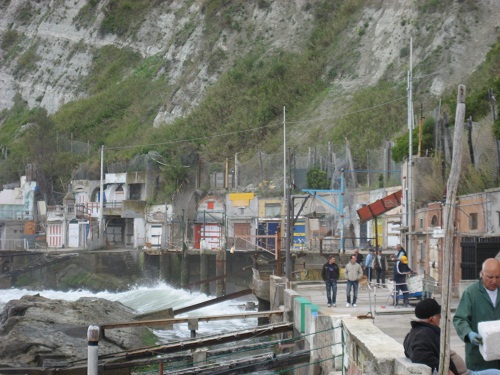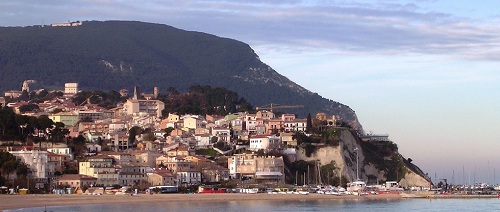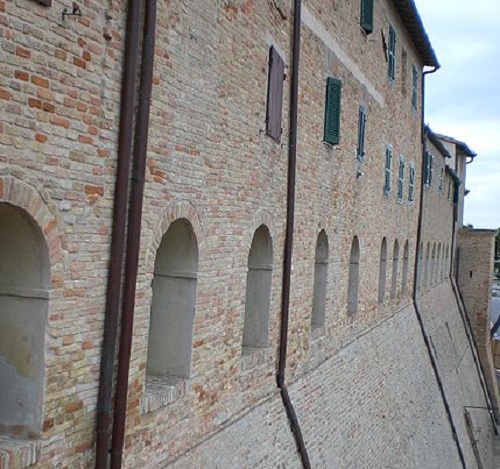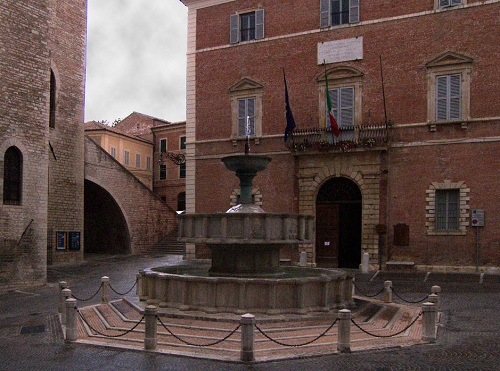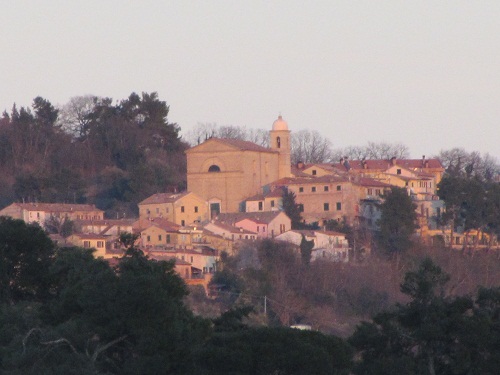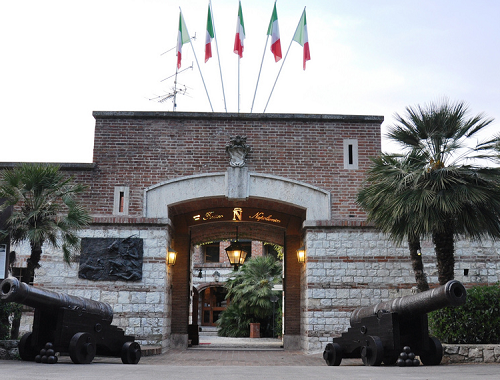Santa Maria di Portonovo, romanesque treasure onto the sea
Portonovo and the related Adriatic coastline is surely known by many as a place where to spend your holidays. For whom travelling and passing by this area, we advise you to go and visit the church of Santa Maria di Portonovo, that is one of the maximum examples of Roman art in Marche.
It stands on an enchanting location upon a little rock cliff drawn into the sea and it is touched by the green Mediterranean scrub characteristic of the Conero Riviera. Indeed, there no exist reliable sources that can certify the history of the beginning of this example of medieval architecture in Marche; henceforth, those who is studying it attempted to make a reconstruction as much adherent to reality of the episodes that brought to its construction.
During the past someone talked about a document that would have been testifying the donation of the ground over the which was built up a Benedictine monastery at Portonovo in 1034; that document is a currently lost and with many doubts about its authenticity.
It is known that Saint Gaudenzio has been living in Portonovo for two years and he has dead over there: therefore, his death represents a good chronological limit to set the construction of the monastery, dated between 1044 and 1050, date matching with morphological characteristics of the building.
The architectural structure of the Church, besides of being particularly impressive, is also very singular: it is a fusion of Greek cross shape, Basilic plant and a Church with chapels parallel-like. External walls have been realized with Conero white stone, whilst internal floor is made by yellow stone and “cotto”. In the lower side of the building there are several single-lancet windows, while in the elliptic planted Byzantine style cupola there are some double lancet windows.
Santa Maria di Portonovo, together with the adjacent monastic building lived by Benedictine friars, were the only proof of life in Portonovo. The church (already mentioned into a trace of the year 1034) and the environment offered to the brothers in Benedetto the conditions to observe the sacred Rule that imposed them work, pray, humility and anonymity.
The Church was born as place of cult for a Benedictine monastery reaching a remarkable importance in Medieval Marche region; then, was partially destroyed in 1320 because of a land- slide falling from Conero Mountain; on the contrary, that landslide did not spare the monastery, which there has any more trace of. When Benedictine monks abandoned it, the small church was unused for centuries.
Since 1436 the settlement was given to some hermit monks, after having reached the Ancona Chapter of the Cathedral jurisdiction. By the way, the monastery kept having an uneasy life, because of an incursion in 1518 by Turkish troops that contributed to its definitive collapse, very damaged before because of many and continuous landslides. During Napoleonic period the church was used by troops until 1837, when abbot Cesaretto retired himself to hermitage at Portonovo and gave start to a restoration of the church.
During following years and beginning from 1860, the property of the building passed to the Italian Reign, whose institutions did not take care about it: they left it becoming recover even for shepherds and flocks. This went on until when in 1894 the first systematic restoration of the settlement was started by consolidation of the structures and the removal of the nineteenth-century plasters.
New restorations of the set have been started between 1988 and 1995, while in 2002 have been effected archeological diggings that bore to the light a medieval cemetery and allowed to track the foundations of the tower with bells (this tower was known by the documents, but still not yet localized) and to find out latest structures around the church, such as the hermit house.
We are obliged to mention numerous restaurants you will be pleased and find along the way downward to the Conero Mountain, up to the seaside: the Il Molo, the Giacchetti and the La Capannina. These ones do represent the local cuisine and allow to taste typical dishes of the area, such as famous “moscioli” (mussels) of Portonovo, sipping a good Castelli di Jesi Verdicchio white wine.









